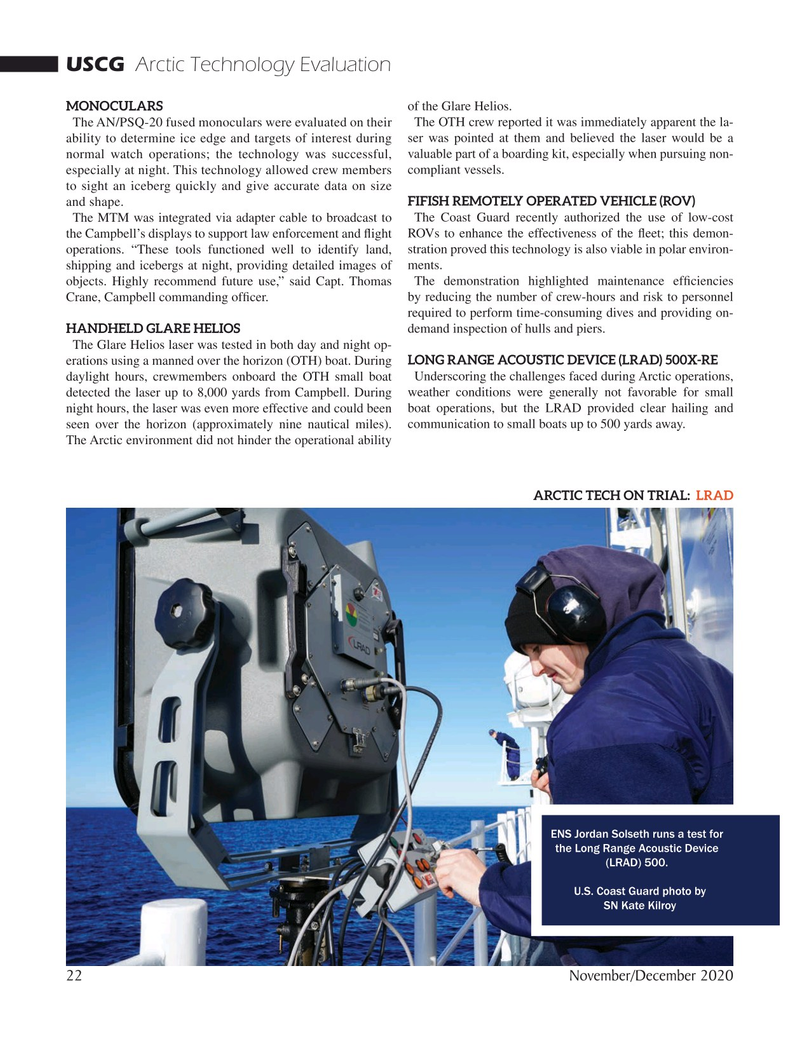
Page 22: of Marine Technology Magazine (November 2020)
Read this page in Pdf, Flash or Html5 edition of November 2020 Marine Technology Magazine
USCG Arctic Technology Evaluation
MONOCULARS of the Glare Helios.
The AN/PSQ-20 fused monoculars were evaluated on their The OTH crew reported it was immediately apparent the la- ability to determine ice edge and targets of interest during ser was pointed at them and believed the laser would be a normal watch operations; the technology was successful, valuable part of a boarding kit, especially when pursuing non- especially at night. This technology allowed crew members compliant vessels. to sight an iceberg quickly and give accurate data on size and shape. FIFISH REMOTELY OPERATED VEHICLE (ROV)
The MTM was integrated via adapter cable to broadcast to The Coast Guard recently authorized the use of low-cost the Campbell’s displays to support law enforcement and ? ight ROVs to enhance the effectiveness of the ? eet; this demon- operations. “These tools functioned well to identify land, stration proved this technology is also viable in polar environ- shipping and icebergs at night, providing detailed images of ments. objects. Highly recommend future use,” said Capt. Thomas The demonstration highlighted maintenance ef? ciencies
Crane, Campbell commanding of? cer. by reducing the number of crew-hours and risk to personnel required to perform time-consuming dives and providing on-
HANDHELD GLARE HELIOS demand inspection of hulls and piers.
The Glare Helios laser was tested in both day and night op- erations using a manned over the horizon (OTH) boat. During LONG RANGE ACOUSTIC DEVICE (LRAD) 500X-RE daylight hours, crewmembers onboard the OTH small boat Underscoring the challenges faced during Arctic operations, detected the laser up to 8,000 yards from Campbell. During weather conditions were generally not favorable for small night hours, the laser was even more effective and could been boat operations, but the LRAD provided clear hailing and seen over the horizon (approximately nine nautical miles). communication to small boats up to 500 yards away.
The Arctic environment did not hinder the operational ability
ARCTIC TECH ON TRIAL: LRAD
ENS Jordan Solseth runs a test for the Long Range Acoustic Device (LRAD) 500.
U.S. Coast Guard photo by
SN Kate Kilroy 22 November/December 2020
MTR #9 (18-33).indd 22 11/3/2020 2:19:55 PM

 21
21

 23
23
